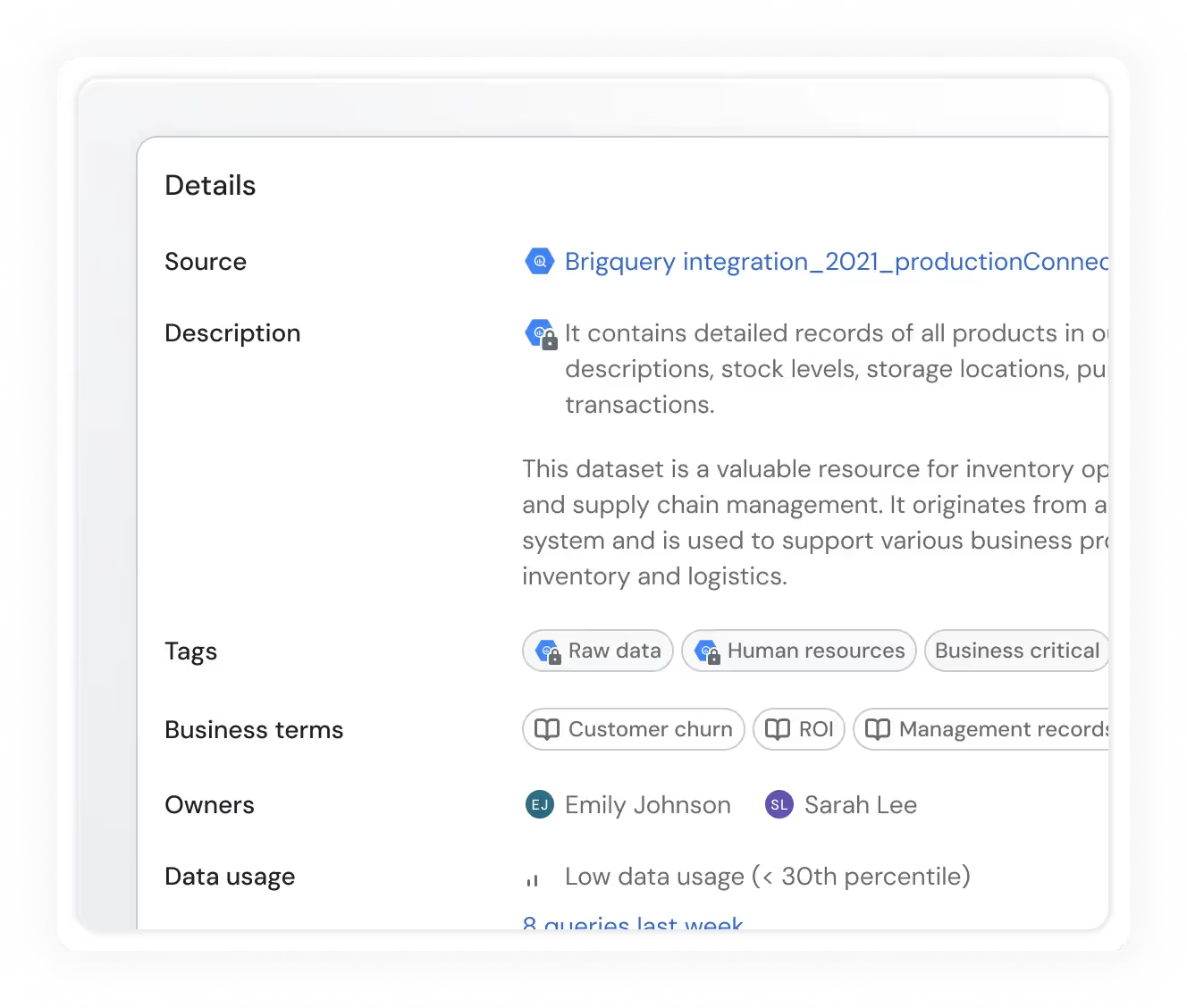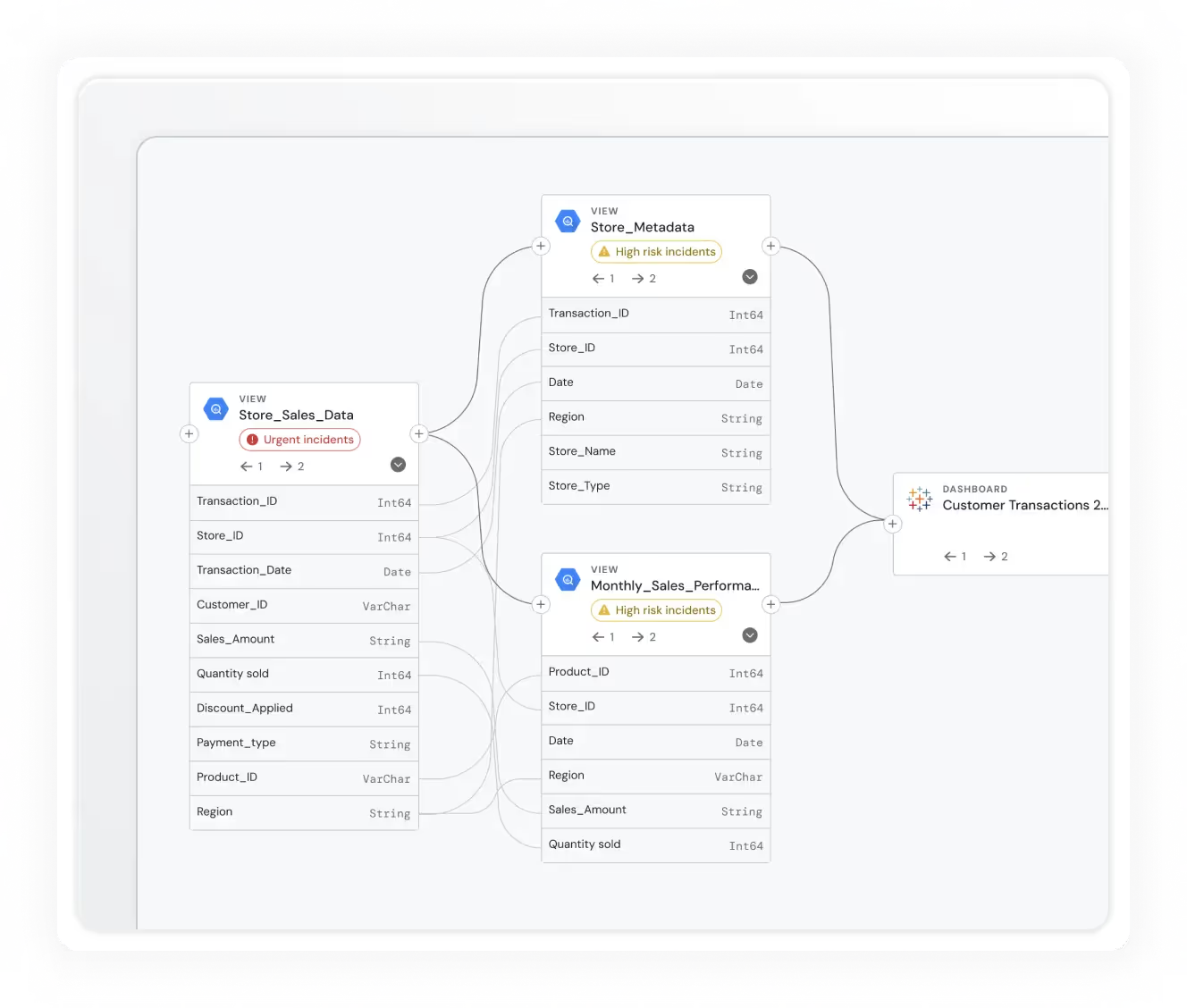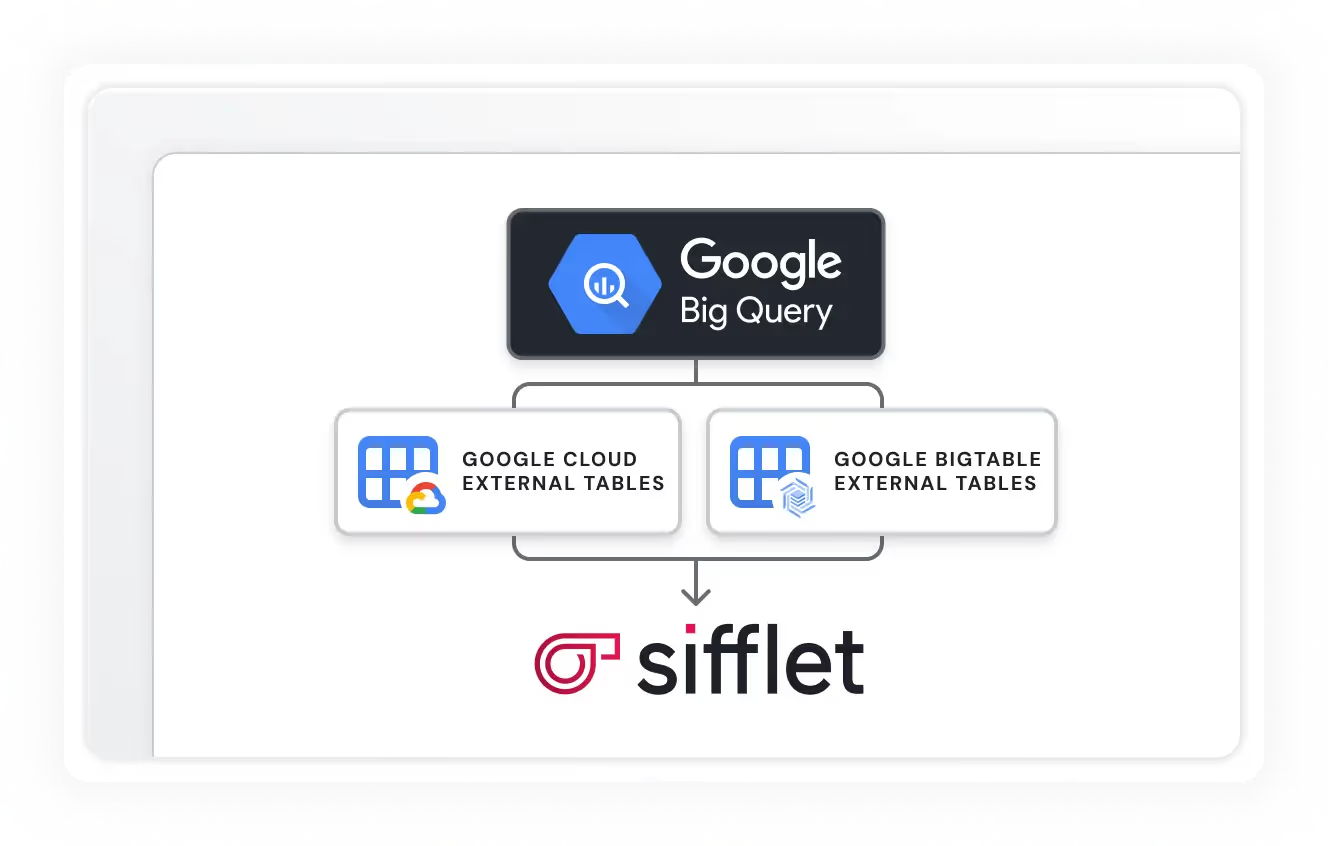
Google BigQuery
Integrate Sifflet with BigQuery to monitor all table types, access field-level lineage, enrich metadata, and gain actionable insights for an optimized data observability strategy.




Metadata-based monitors and optimized queries
Sifflet leverages BigQuery's metadata APIs and relies on optimized queries, ensuring minimal costs and efficient monitor runs.


Usage and BigQuery metadata
Get detailed statistics about the usage of your BigQuery assets, in addition to various metadata (like tags, descriptions, and table sizes) retrieved directly from BigQuery.
Field-level lineage
Have a complete understanding of how data flows through your platform via field-level end-to-end lineage for BigQuery.


External table support
Sifflet can monitor external BigQuery tables to ensure the quality of data in other systems like Google Cloud BigTable and Google Cloud Storage














Still have a question in mind ?
Contact Us
Frequently asked questions
How does Sifflet help with SLA compliance for business metrics?
By combining real-time metrics monitoring with proactive alerts and incident management workflows, Sifflet helps teams stay on top of SLA compliance. Users can track metrics freshness, detect anomalies, and take action before SLA breaches occur.
Can I use Sifflet to detect issues in my dbt models before they impact downstream dashboards?
Absolutely! Sifflet's real-time anomaly detection and full data lineage tracking make it easy to catch issues in your dbt models early. This proactive approach helps prevent broken dashboards and ensures data reliability across your analytics pipeline.
How does Sifflet support collaboration across data teams?
Sifflet promotes un-siloed data quality by offering a unified platform where data engineers, analysts, and business users can collaborate. Features like pipeline health dashboards, data lineage tracking, and automated incident reports help teams stay aligned and respond quickly to issues.
What are some signs that our organization might need better data observability?
If your team struggles with delayed dashboards, inconsistent metrics, or unclear data lineage, it's likely time to invest in a data observability solution. At Sifflet, we even created a simple diagnostic to help you assess your data temperature. Whether you're in a 'slow burn' or a 'five alarm fire' state, we can help you improve data reliability and pipeline health.
Why is aligning data initiatives with business objectives important for Etam?
At Etam, every data project begins with the question, 'How does this help us reach our OKRs?' This alignment ensures that data initiatives are directly tied to business impact, improving sponsorship and fostering collaboration across departments. It's a great example of business-aligned data strategy in action.
What does Sifflet's recent $12.8M Series A funding mean for the future of data observability?
Great question! This funding round, led by EQT Ventures, allows us to double down on our mission to make data more reliable and trustworthy. With this investment, we're expanding our data observability platform, enhancing real-time monitoring capabilities, and growing our presence in EMEA and the US.
How does aligning data observability with business objectives improve outcomes?
Aligning data observability with business goals transforms data from a technical asset into a strategic one. By setting clear KPIs and linking data quality monitoring to business impact, teams can make smarter decisions, improve SLA compliance, and drive real value from their data investments.
Why is data lineage a pillar of Full Data Stack Observability?
At Sifflet, we consider data lineage a core part of Full Data Stack Observability because it connects data quality monitoring with data discovery. By mapping data dependencies, teams can detect anomalies faster, perform accurate root cause analysis, and maintain trust in their data pipelines.














-p-500.png)
